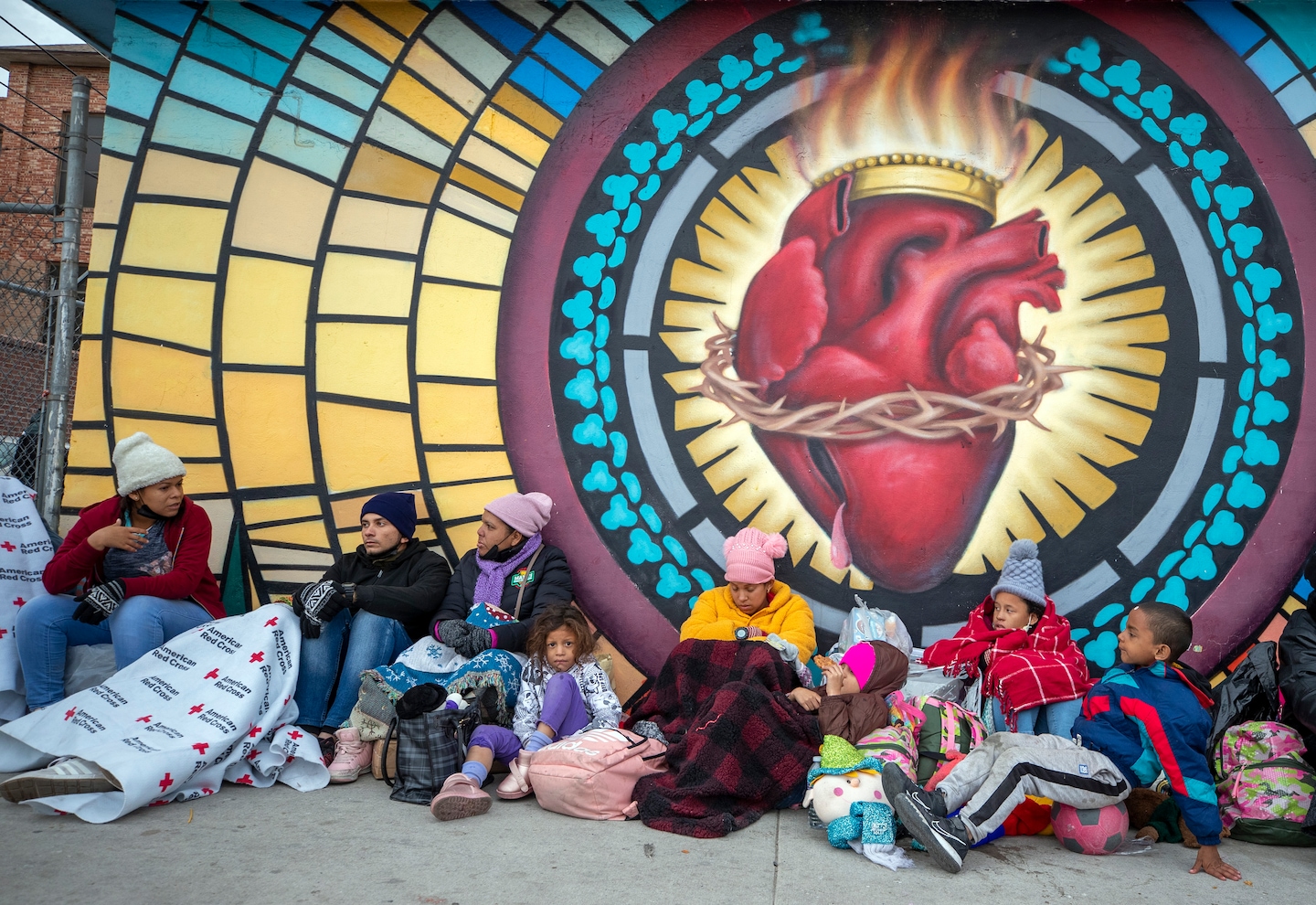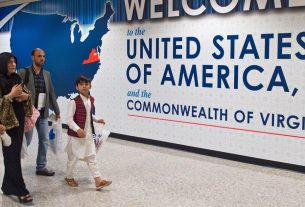“Most of our patients have symptoms of PTSD — I want to initiate a screening for every patient,” said Elmore, an emergency medicine doctor, at Clinica Hope. It was opened this fall by the Catholic nonprofit Hope Border Institute with help from Bishop Mark Seitz of El Paso, Texas, which borders Juarez.
Doctors, social workers, shelter directors, clergy and law enforcement say growing numbers of migrants suffer violence that amounts to torture and are arriving at the U.S.-Mexican border in desperate need of trauma-informed medical and mental health treatment.
But resources for this specialized care are so scarce, and the network of shelters so overwhelmed by new arrivals and migrants who’ve been stuck for months by U.S. asylum policies, that only the most severe cases can be handled.
“Like a pregnant 13-year-old who fled gang rapes, and so needs help with childcare and middle school,” said Zury Reyes Borrero, a case manager in Arizona with the Center for Victims of Torture, who visited that girl when she gave birth. “We get people at their most vulnerable. Some don’t even realize they’re in the U.S.”
In the past six months, Reyes Borrero and a colleague have helped about 100 migrants at Catholic Community Services’ Casa Alitas, a shelter in Tucson, Arizona, that in December was receiving about 700 people daily released by U.S. authorities and coming from countries as distinct as Congo and Mexico.
Each visit can take hours, as the case workers try to build a rapport with migrants, focusing on empowering them, Reyes Borrero said.
“This is not a community that we talk babbling brook with… They might not have any memory that’s safe,” said Sarah Howell, who runs a clinical practice and a nonprofit treating migrant survivors of torture in Houston.
When she visits patients in their new Texas communities, they routinely introduce relatives or neighbors who also need help with severe trauma but lack the stability and safety necessary for healing.
“The estimated level of need is at least five times higher than we support,” said Leonce Byimana, director of U.S. clinical services for the Center for Victims of Torture, which operates clinics in Arizona, Georgia and Minnesota.
Most migrants are traumatized by what they left behind, as well as what they encountered en route, Byimana said. They need “first-aid mental health” as well as long-term care that’s even harder to arrange once they disperse from border-area shelters to communities across the country, he added.
Left untreated, such trauma can escalate to where it necessitates psychiatric care instead of therapy and self-help, said Dylan Corbett, Hope Border Institute’s executive director.
Jesuit Refugee Service/USA, the U.S. branch of the global Catholic refugee agency, is planning to ramp up mental health resources in the coming weeks in El Paso, which has seen a surge in crossings, said its director, Joan Rosenhauer.
All along the border, the most staggering trend has been the increase in pregnant women and girls, some younger than 15, who are victims of assault and domestic violence.
Volunteers and advocates are encountering so many of these survivors that they had to focus scarce legal, medical and shelter resources on helping them, leaving hundreds of other victims of political violence and organized crime to fend for themselves.
Service providers and migrants say the most dangerous spot on journeys filled with peril at every step is “la selva” – the Darien Gap jungle separating Colombia from Panama, crossed by increasing numbers of Venezuelans, Cubans and Haitians who first moved to South America and are now seeking safer lives in the United States.
Natural perils like deadly snakes and rivers only add to the risks of an area rife with bandits preying on migrants. Loreta Salgado was months into her flight from Cuba when she crossed the Darien.
“We saw many dead, we saw people who were robbed, people who were raped. We saw that,” she repeated, her voice cracking, in a migrant shelter in El Paso a few days before Christmas.
Asked about “la selva,” some women just suck in their breath – and only later reveal having saved their daughters by speeding them along and getting raped themselves, or enduring strained relationships with their partners who were made to watch the assault, Howell said.
“I don’t think it’s the first rape that most women I’ve talked to have experienced. But it’s the most violent and the most shameful, because it was in front of other people,” Howell added.
In many cases, forensic evaluations at border clinics that document mental and physical abuse are also crucial to migrants’ asylum cases, because often no other evidence is available for court proceedings, Byimana said. Asylum is granted to those who cannot return to their countries for fear of persecution on specific grounds, including sometimes very high, systemic levels of violence against women.
But it takes years for asylum cases to be decided in U.S. immigration court, with a current backlog of more than 1.5 million people, according to Syracuse University’s Transactional Records Access Clearinghouse. And that’s with pandemic-era restrictions still in place that allow authorities to turn away or expel most asylum-seekers.
A long wait for resolution, coming on top of a long journey across multiple countries, can intensify the trauma that migrants experience, advocates say.
“There’s a different tension and fear in faces than I’ve seen before,” said Howell, who’s been researching trauma and forced migration for 15 years. “They don’t know how to stop running.”
Associated Press writer Morgan Lee in El Paso contributed to this report.
Associated Press religion coverage receives support through the AP’s collaboration with The Conversation US, with funding from Lilly Endowment Inc. The AP is solely responsible for this content.



